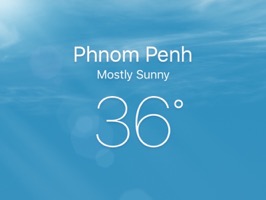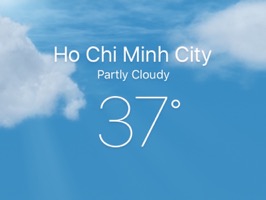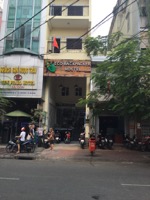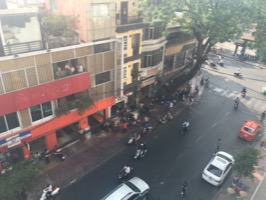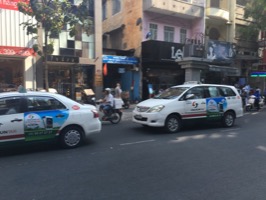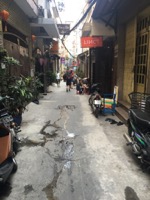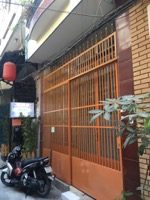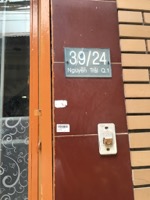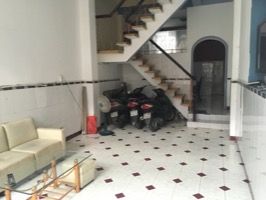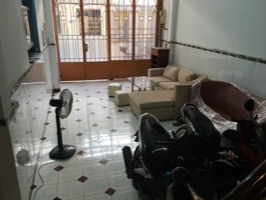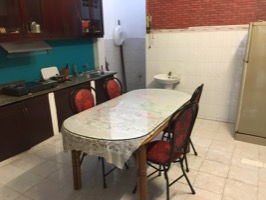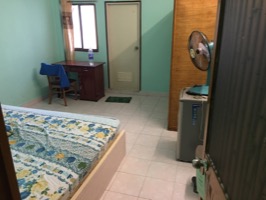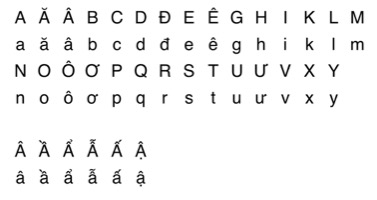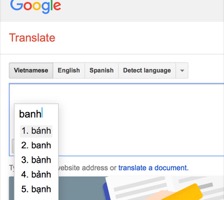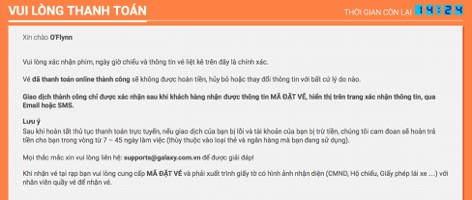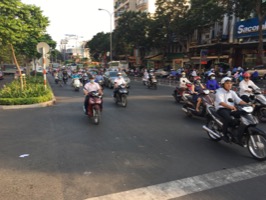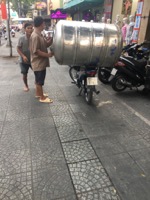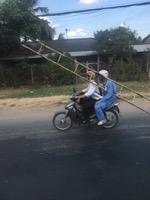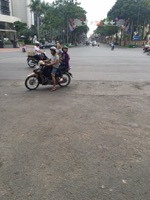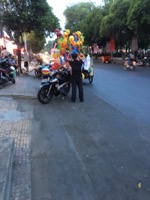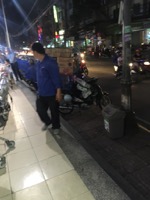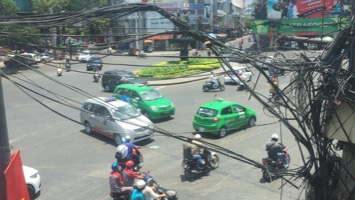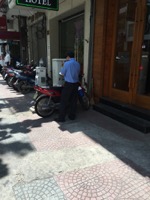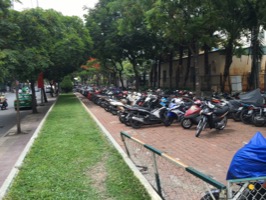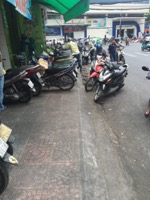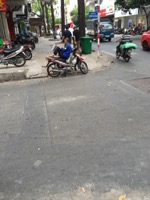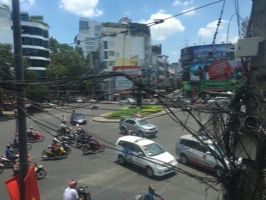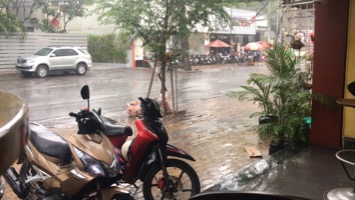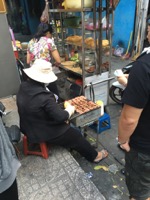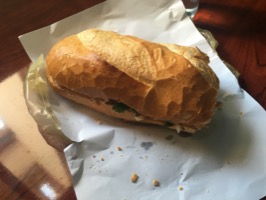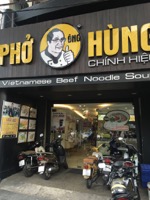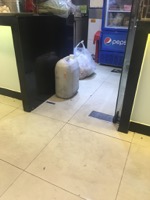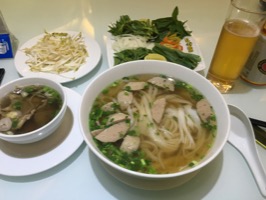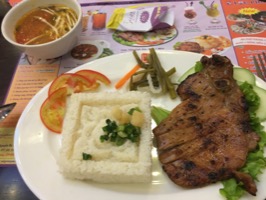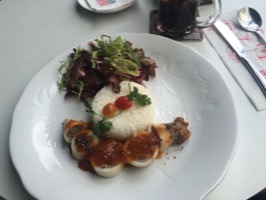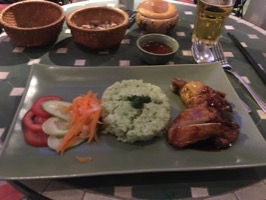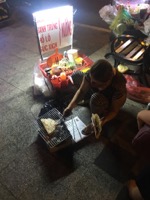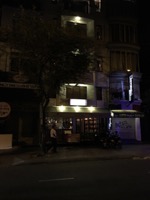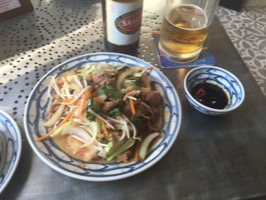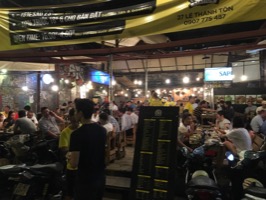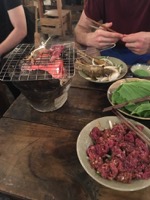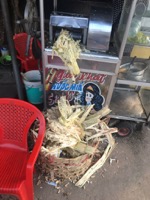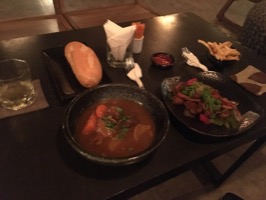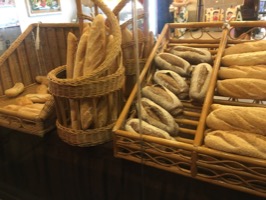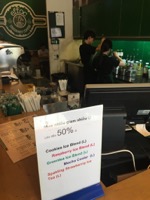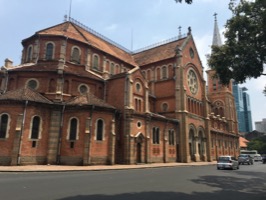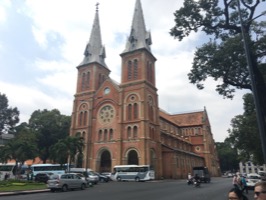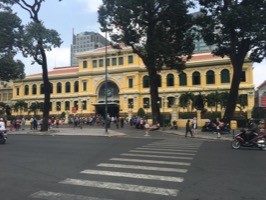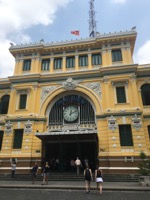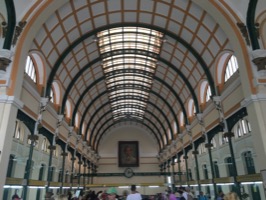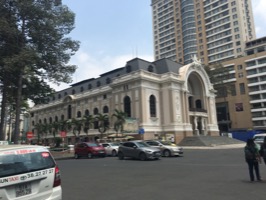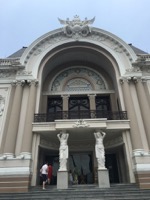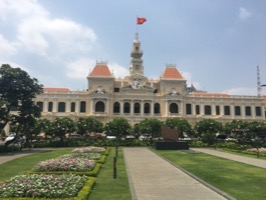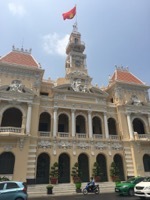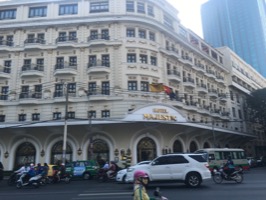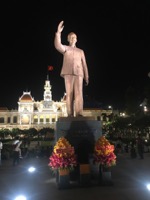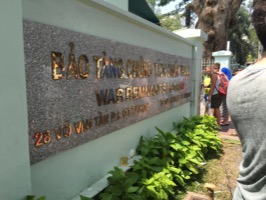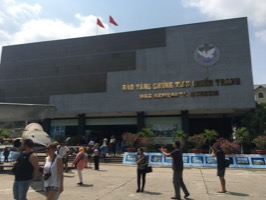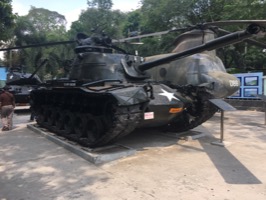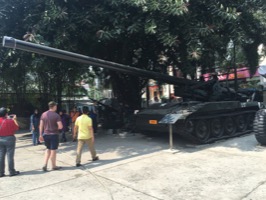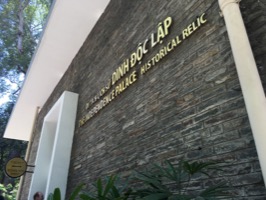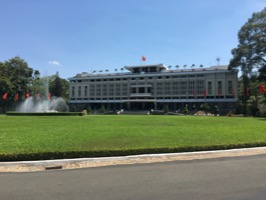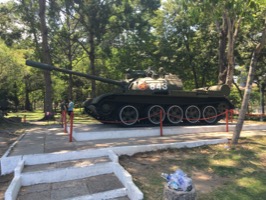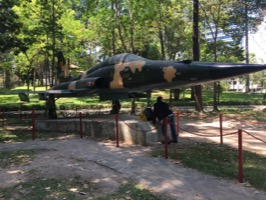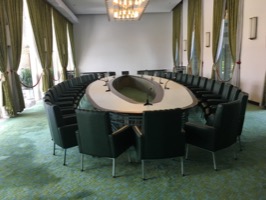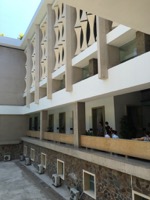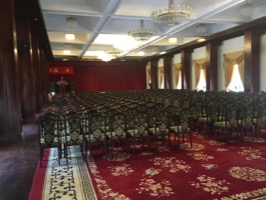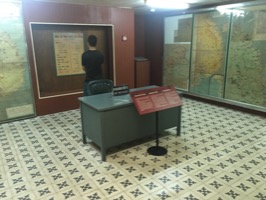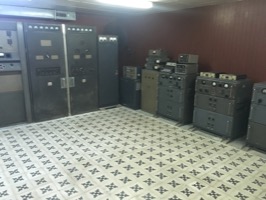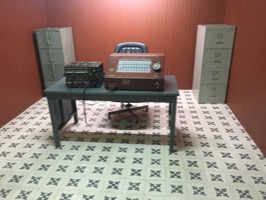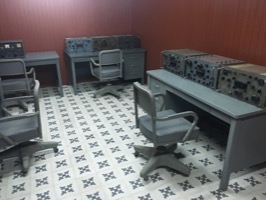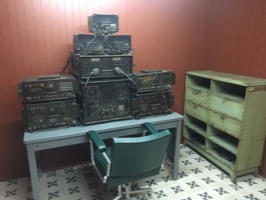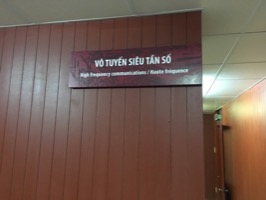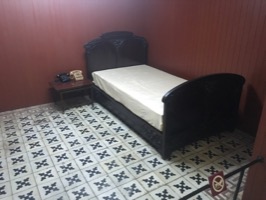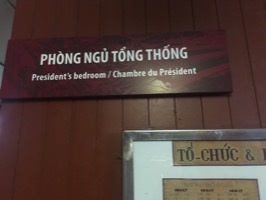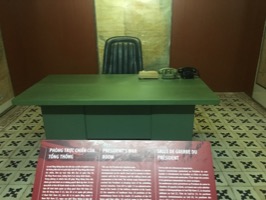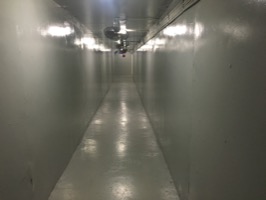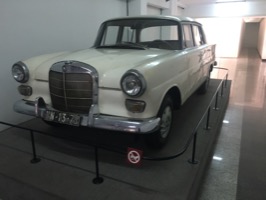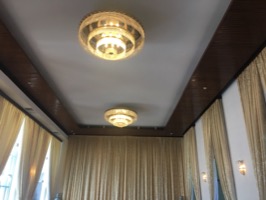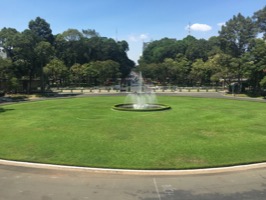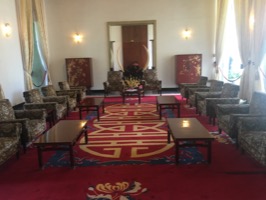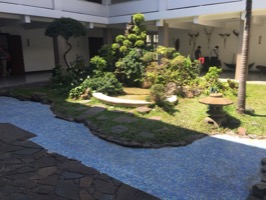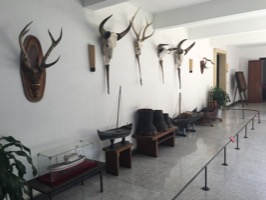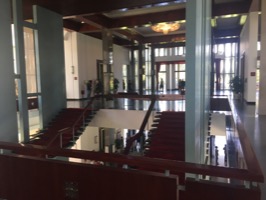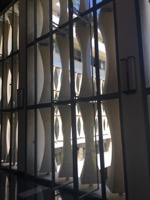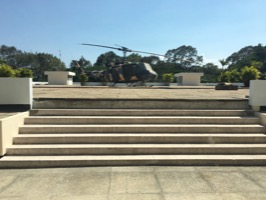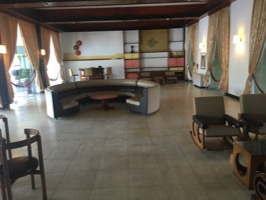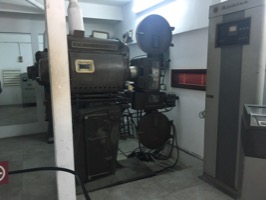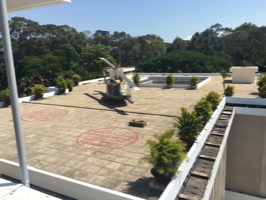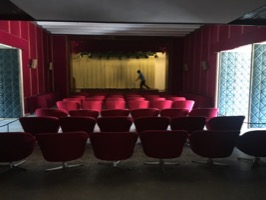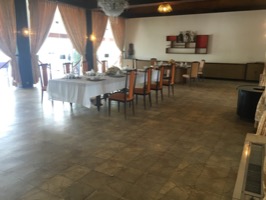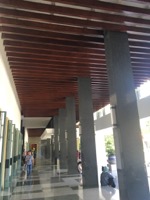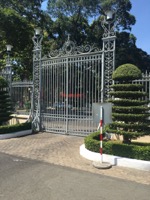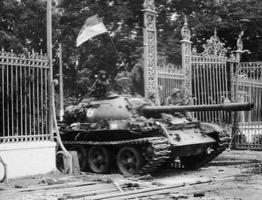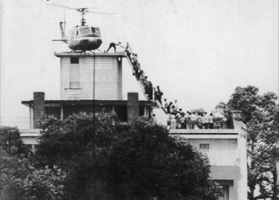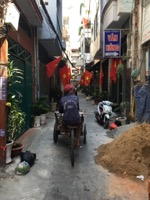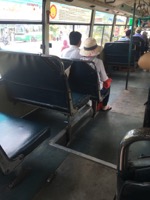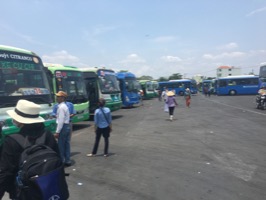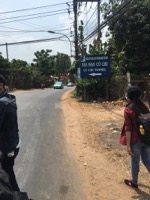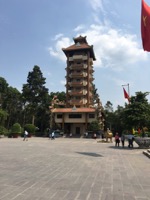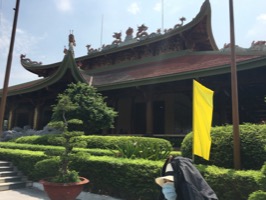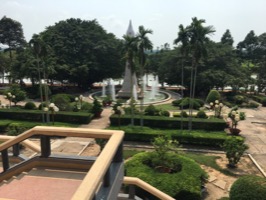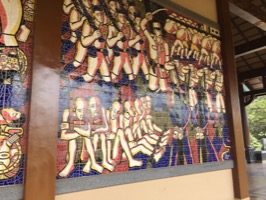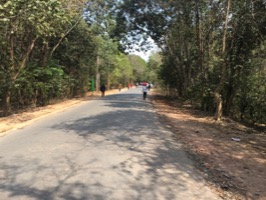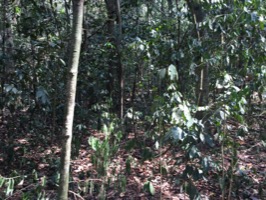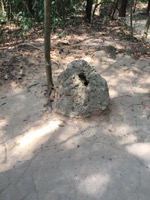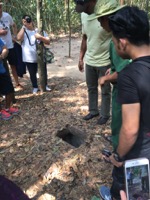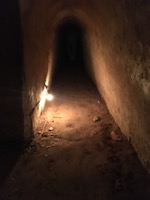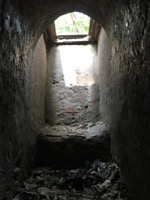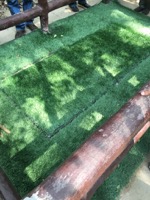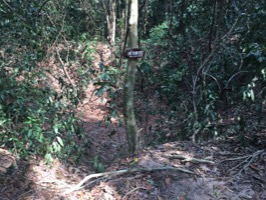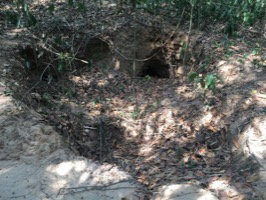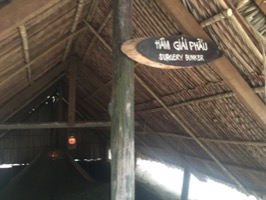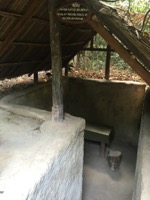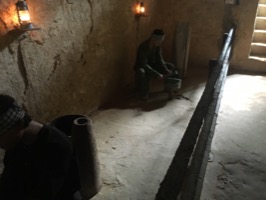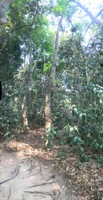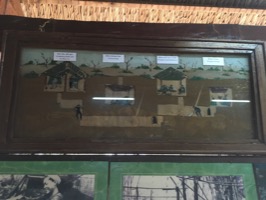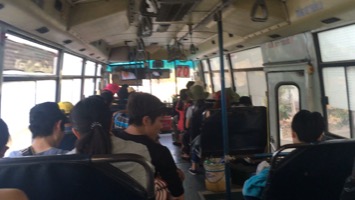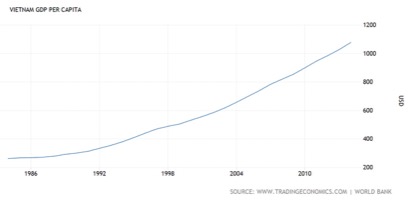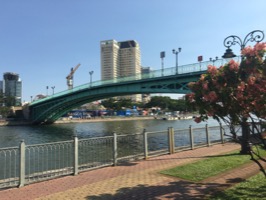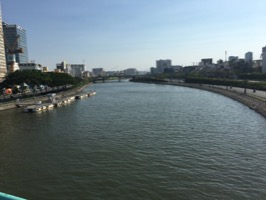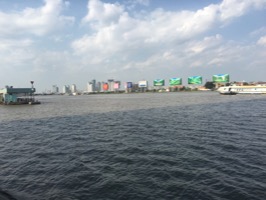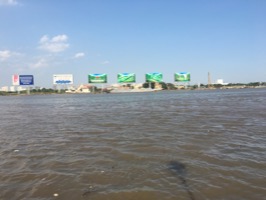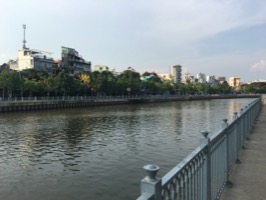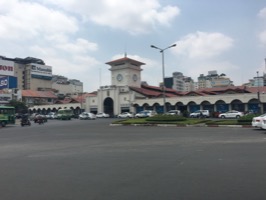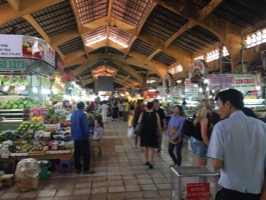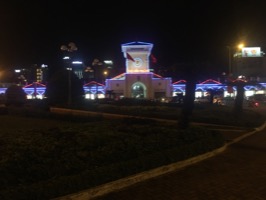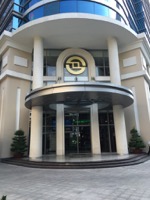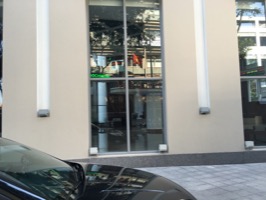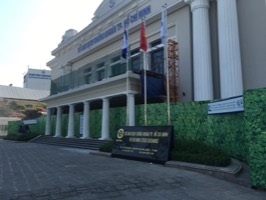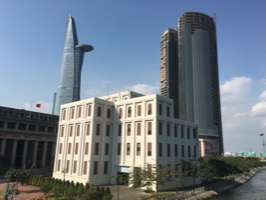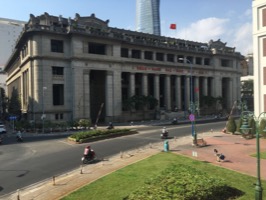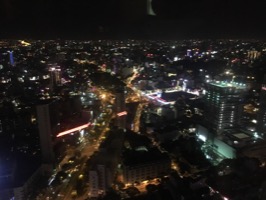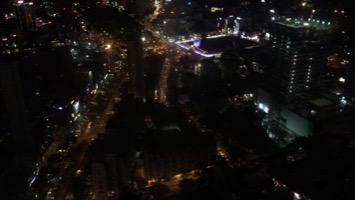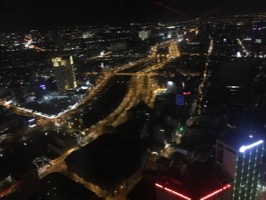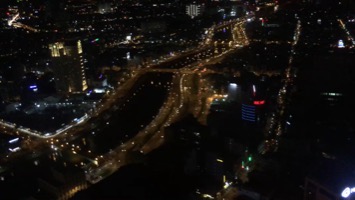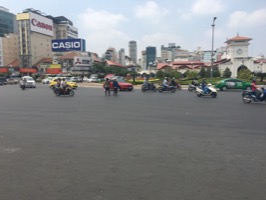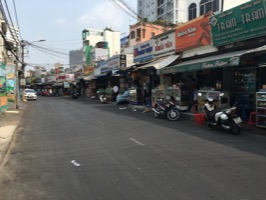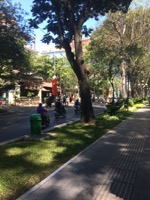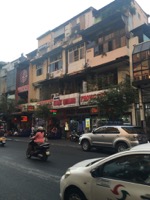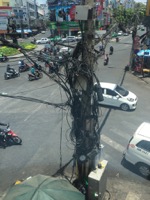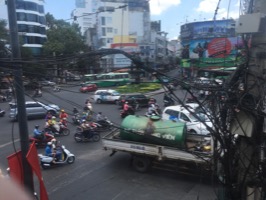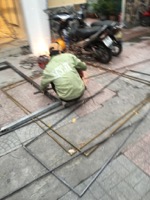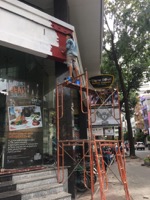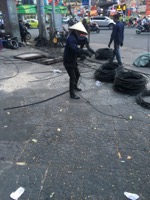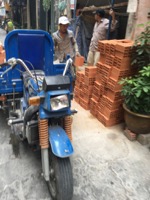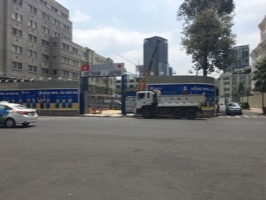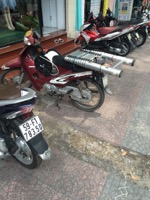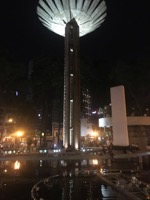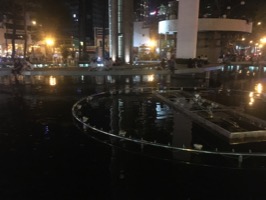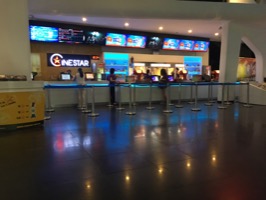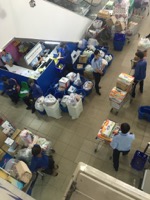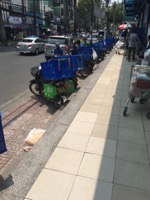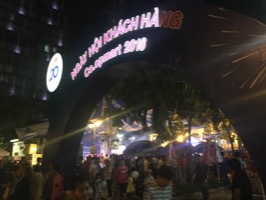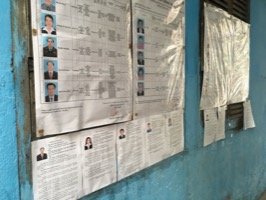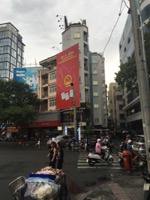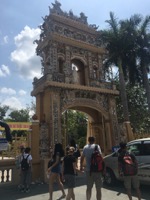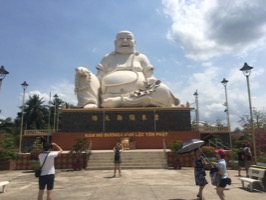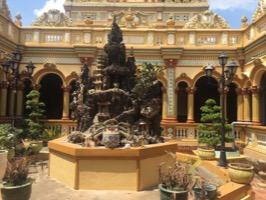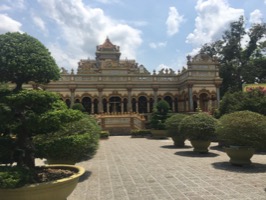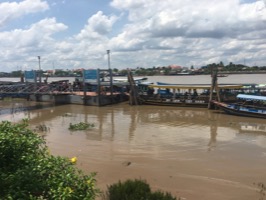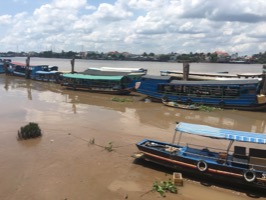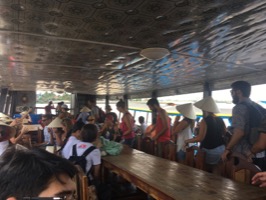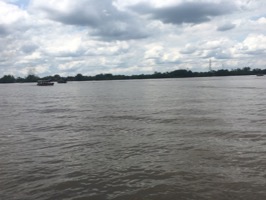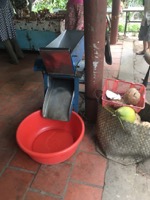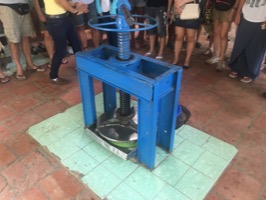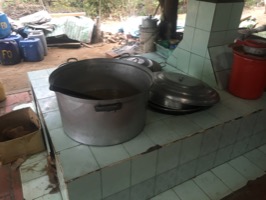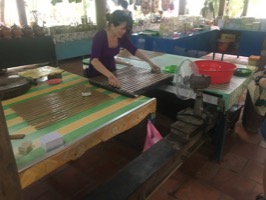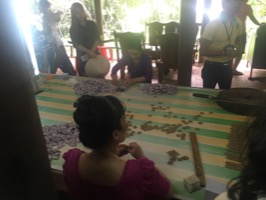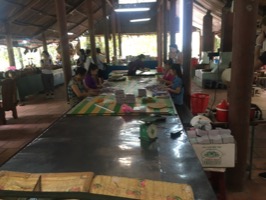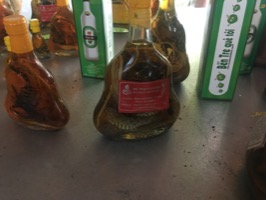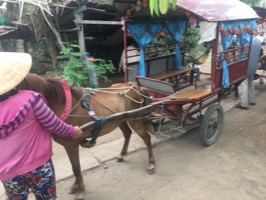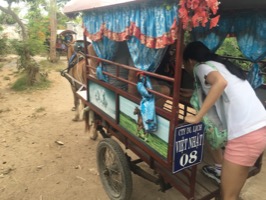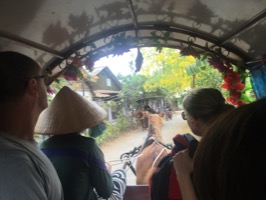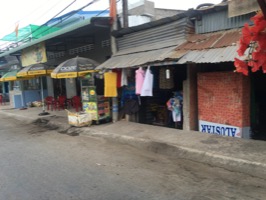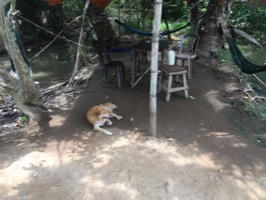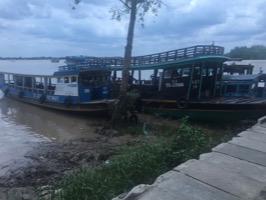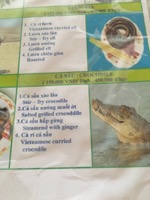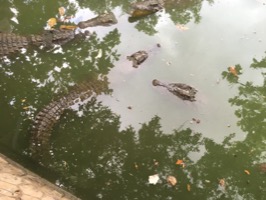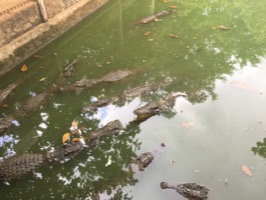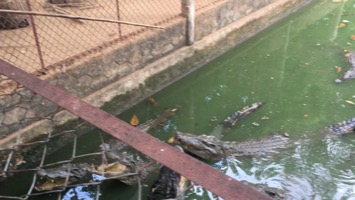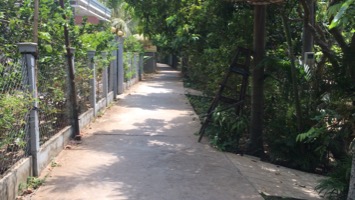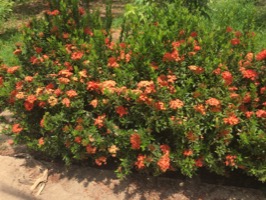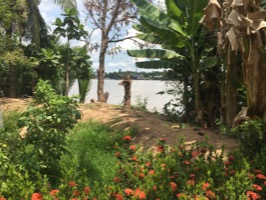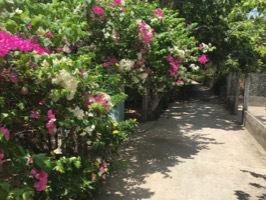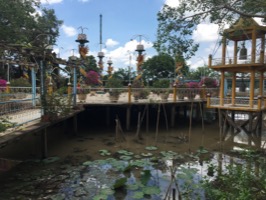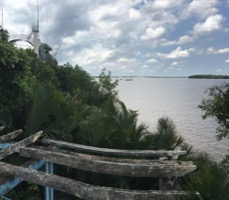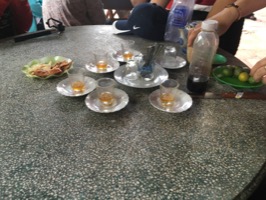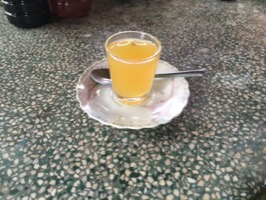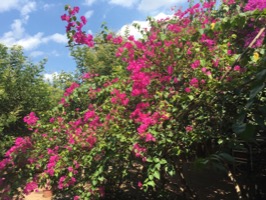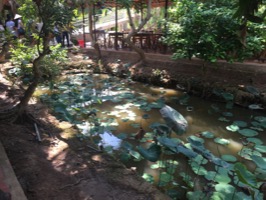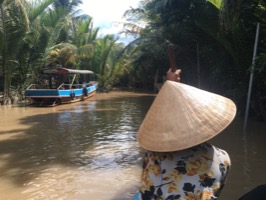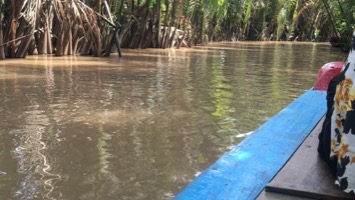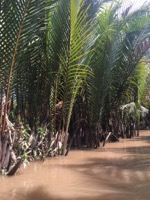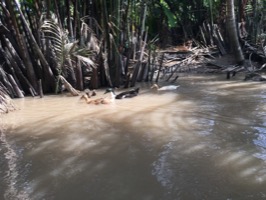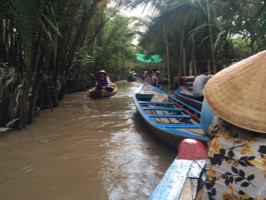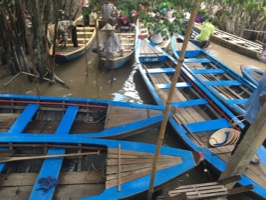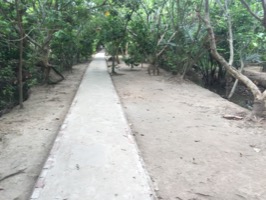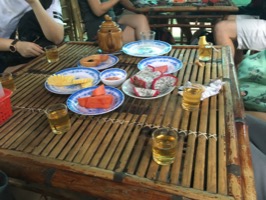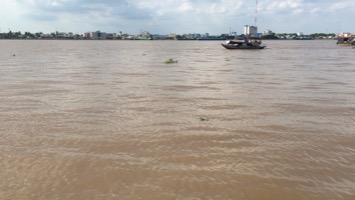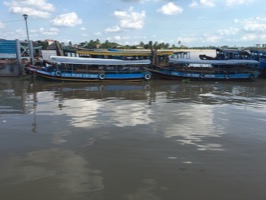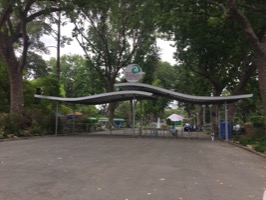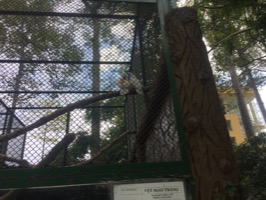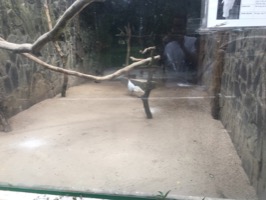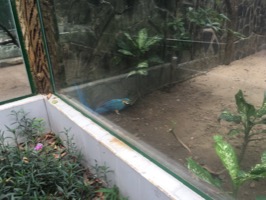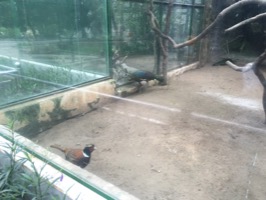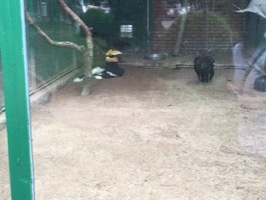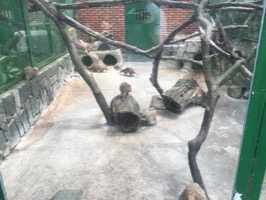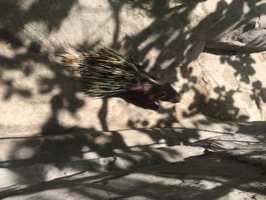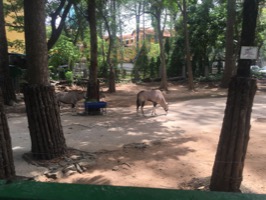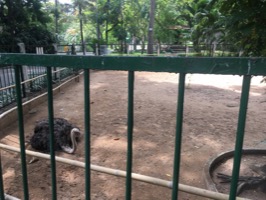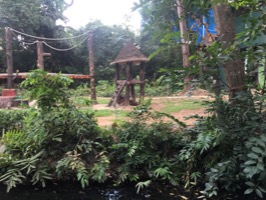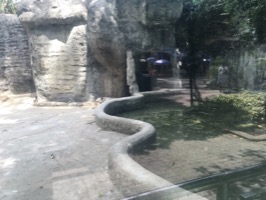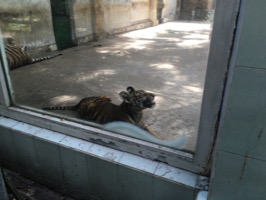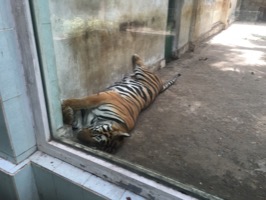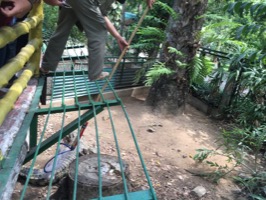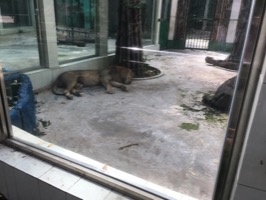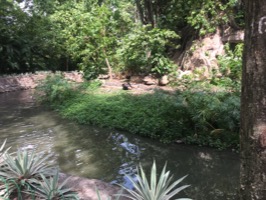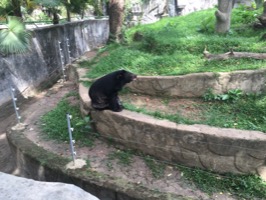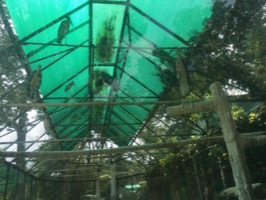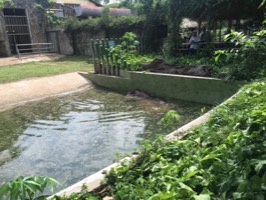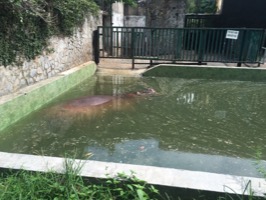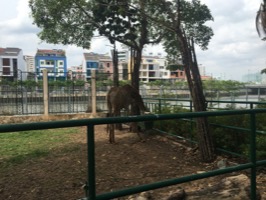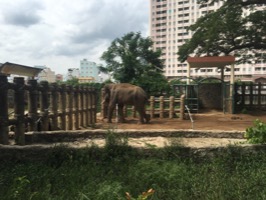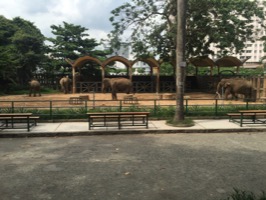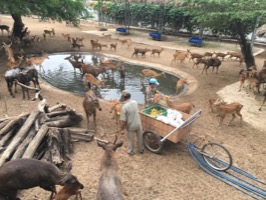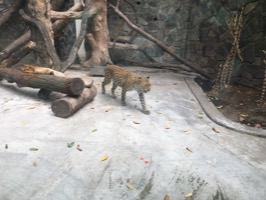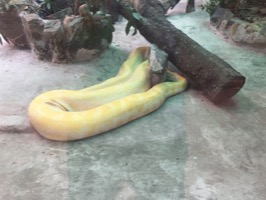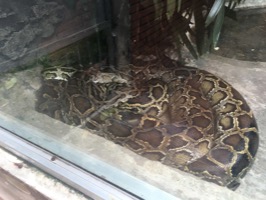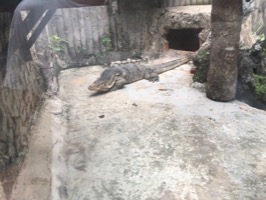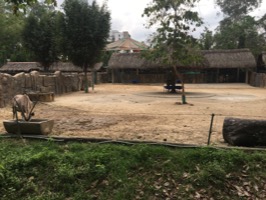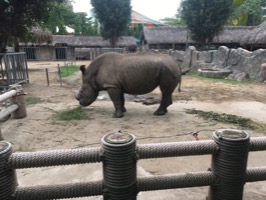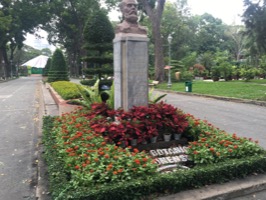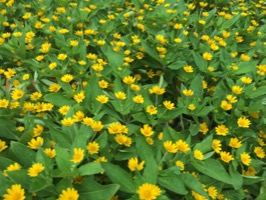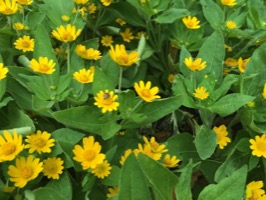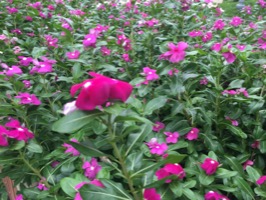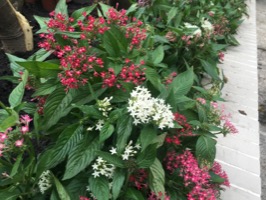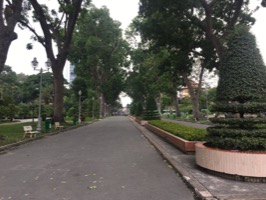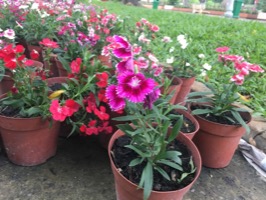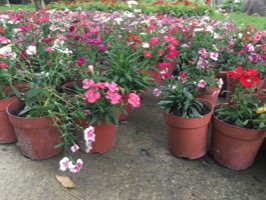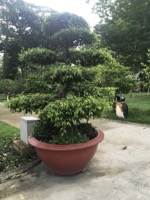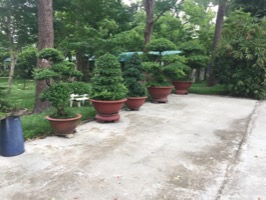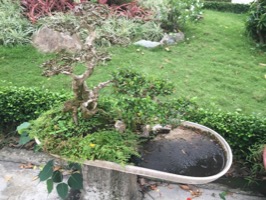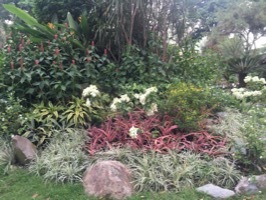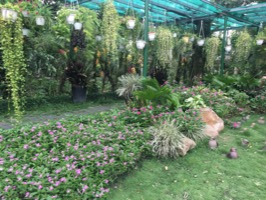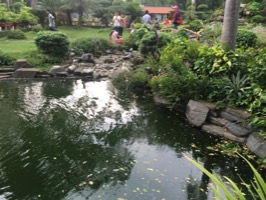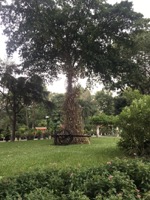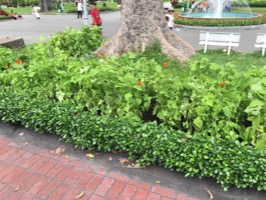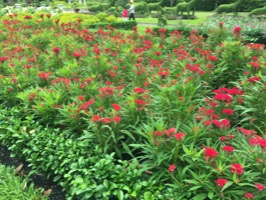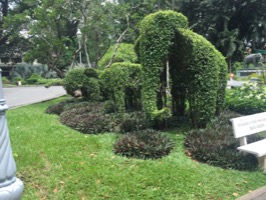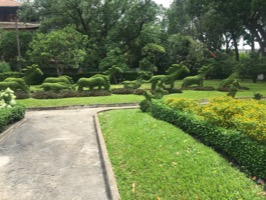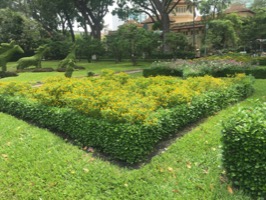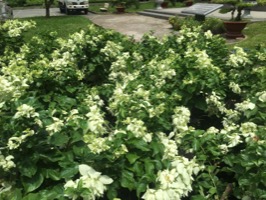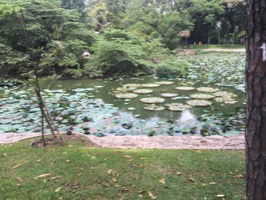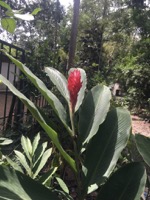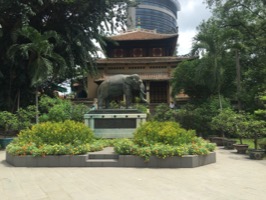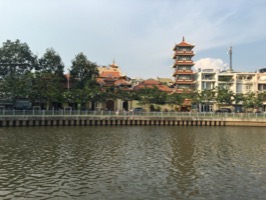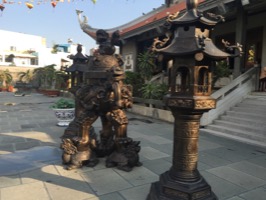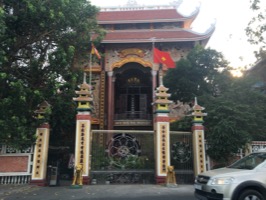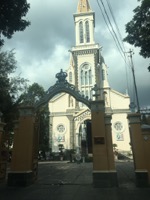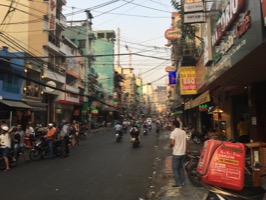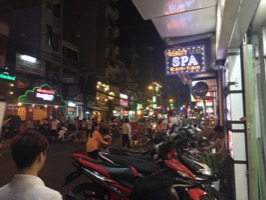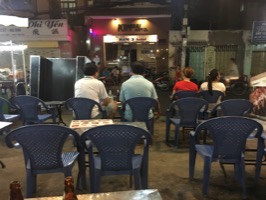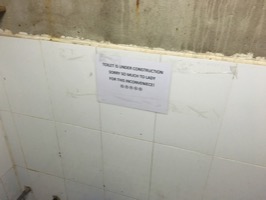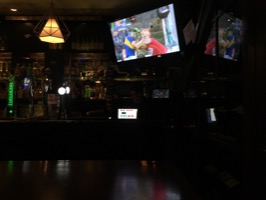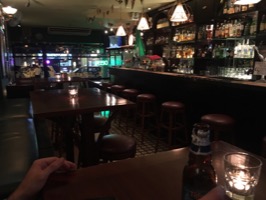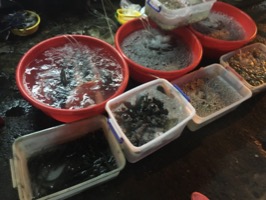Saigon
2,860km travelled.
15th Mar 2016 – 29th May 2016. 11 weeks.
14,070km travelled. 2,860km travelled excluding flights.
The bus took about six and a half hours to get from Phnom Penh to Saigon with the Giant Ibis bus company. It was fairly uneventful.
I stayed at the Eco Backpacker Hostel in the city centre for two nights while I looked for a more permanent place to stay.
I found a room for rent in a six bed house on craigslist that was only five minutes from the hostel – just on the other side of the nearby park. I emailed the landlord and arranged a viewing for the next day.
The ground floor of residential buildings tend to be a combined living room, garage for motorbikes and often a shop of some kind. There was a kitchen in the back and the three upper floors had two rooms each. Everything looked good so I agreed to take it for 7,000,000 VND/month (€275) – which included cleaning and laundry. Electricity was 3,000 VND/kWh (€0.12) and each room had it's own meter. It worked out at roughly €1 a day even with the aircon on for maybe 10 hours a day. I moved in the next day. The landlord also rented motorbikes for €45/month but I decided against it. My housemates were mainly expats (British, Canadian, American, French, Russian) and mostly short term lets. I lived there for 11 weeks.
The address was 39/24 Nguyễn Trãi. Buildings are numbered, odd numbers on one side, even on the other. The street was Nguyễn Trãi. But the house was actually down an alley and not on the actual street. Alleys don't have names, they're given a number as if they were a building on the street. There is a second number that identifies the building. So, it was building 24 down alley 39 (which is between 37 and 41 on Nguyễn Trãi street).
Ho Chi Minh City is the largest city in Vietnam and has a population of over 10 million people (17 million urban residents in the metropolitan area). A subsection of the city that includes the city centre was originally known as Saigon and most people I spoke to still refer to the city as that. It was renamed in 1976 after the revolutionary leader Hồ Chí Minh. The city is split up into districts, which are subdivided into wards. My full address was 39/24 Nguyen Trai Street, Ben Thanh Ward, District 1, Ho Chi Minh City. A lot of old city centre has French colonial buildings and layouts (wide straight boulevards leading up to impressive buildings).
There were a few small parks near my house which were nice places to get some shade and away from the noise when I was out and about. Certain streets still have specialities, like electronics or sign making. There were a lot of clothes shops on my street. I didn't venture outside Districts 1 and 3 much.
I initially thought Nguyễn meant "street" because a lot of streets on the map include it in their name but it turns out it is a family name. Roughly 40% of the population have it because many people adopted it when the ruling family had that name. It is often abbreviated to Ng. Also, the order of their names are reversed, so it goes Family Middle Given.
The Vietnamese language is based on latin characters which makes it much easier to read than say Thai or Chinese, which have completely different alphabets. There are 29 letters (12 vowels and 17 consonants). You can see it below. Each word is one syllable long. There are also six tones which tell you how to change the pitch as you say the word and they are denoted by extra markings placed on the vowels – you can see them for a single vowel under the alphabet below. They also speak different dialects in the North and South.
Some place names have English versions, which often drop the markings and merge words together. Some examples are Vietnam, Ho Chi Minh City, Saigon and Hanoi which are Việt Nam, Thành phố Hồ Chí Minh, Sài Gòn and Hà Nội respectively in Vietnamese. My address in Vietnamese was 39/24 Nguyễn Trãi, Phường Bến Thành, Quận 1, Thành phố Hồ Chí Minh, Việt Nam.
I didn't really learn much Vietnamese because most people spoke English where I was living. Google Translate was very useful when I did need to translate things (such as menus) as it makes it easy to insert Vietnamese (gives you a dropdown for all the vowel and tone combinations). It can also pronounce the words for you if you want to try to speak the language. I put in a screenshot I took trying to buy a cinema ticket (it switched from English to Vietnamese half way through the process).
Some of the basics would be hello (xin chào), thank you (cám ơn) and male/female (nam/nữ) – for bathrooms. There are less formal ways to say hello but they vary depending on the age and gender of the person and translate roughly as hello brother, hello sister, hello uncle, etc. For this reason, people often ask you your age quite quickly so they know how to greet you. For food, there is beef (bò), chicken (gà), fish (cá), rice (cơm) and bread (bánh).
Traffic is probably the biggest shock for some people but it's similar to Thailand and Cambodia so I wasn't too unsettled by it. There are now 7.5 million motorbikes in the city. Most of the cars on the road are taxis. The roads are dangerous and chaotic. They drive fairly slow because it's too dangerous too drive fast. Right of way is generally decided by the size – buses, cars, motorbikes, bikes, pedestrians. They almost constantly beep to let others know where they are but the signal to noise ratio means you quickly start to ignore all the beeping.
They will drive on both sides of the road, down one way streets, on footpaths, anywhere really. Traffic lights are often ignored, except (usually) at major junctions. Those turning right ignore the the lights. When the lights change those turning left usually try to cut quickly in front of the oncoming traffic rather than waiting.
The motorbike is like the family SUV and commercial vehicle all rolled into one. Anything goes. You can have five people on a bike, heavily pregnant women, a couple of small children. Some have trained their dogs to sit on the back. All kinds of attachments can be fitted on the back. They are comically overloaded in some cases. I saw a man drive around a roundabout balancing a tray with four bowls of soup on it. They are often talking on the phone while driving as well.
Crossing the road takes a little getting used to but it's not impossible. It would be more of a shock to someone coming from a city where jaywalking was illegal. You usually have to walk slowly and let the bikes weave around you (just make sure you don't hestitate or change course too quickly). Most of signs letting you know when to cross are only on one side for some reason.
Footpaths are often either used for motorbike parking or stalls so you have to walk on the road for many sections. There are usually parking attendents in light blue shirts sitting outside shops that park and make sure no one steals your bike. There are huge parking lots for motorbikes dotted around the city too.
The motorbike taxi guys usually wear dark blue shirts and are often perched lying backwards on their bikes waiting for customers. Apps for getting taxis are common (Grab and Uber) and are usually much cheaper than just approaching a driver on the street (for tourists anyway). The motorbike taxi drivers' constant soliciting can get a little annoying (waving, shouting, whistling, clapping at you) but get used to ignoring them pretty easily. The ones near my house started recognising me quickly and left me alone.
For the first two months, the weather was hot, real hot, all day, every day. The range was usually between 33 and 38 degrees. Some days it was cloudly which made it a little more bearable. Around mid May it started raining, just a drizzle here and there at first but eventually there were heavy but relatively short thunder storms. The temperature cooled to a range between 25 and 33 degrees, which was much more pleasant.
It took a little time to get used to the food and there is a lot to choose from. Some of it is very tasty but it can take a little while to get used to it. Their most famous dish is probably phở (noodle soup, usually with sliced beef). There was a chain near my house called Phở Ông Hùng that I used to go to. I saw the super secret sauce/broth arriving in large containers. You could get a bowl for 74,000 VND (€3). The cheapest dinner I got in a restaurant was for 45,000 VND (€1.80) but it turns out the food for around 100,000 VND (€4) is much nicer. Some nice restaurants were 5ku Station and Chị Hoa.
They use various combinations of chopsticks, spoons and forks dependind on the dish. I learned how to use chopsticks well enough to eat relatively quickly. In the first restaurant they must have been watching me as they gave me a fork after a few minutes.
Street food is big and you can probably find someone selling food every fifty metres of so. I only usually bought snacks from vendors that were busy. Bánh mì are very popular and are usually sold on the street. They're basically sandwiches of various kinds (usually some form of pork). The lady at the end of my alley sold some good ones for 18,000 VND (€0.72). She was rated 66th best restaurant in the city on TripAdvisor (out of over 2,000).
They have really good, fresh bread as a result of French colonisation. There are a few really nice bakeries around. The meat quality can vary from mostly fat, gristle, bone and heavily reconstitued to meaty and tasty. Lamb is rare. Anything dairy tends to be expensive.
Instead of TripAdvisor I started using Foody.vn for restaurants because it's more complete and people upload photos of the menus.
They have a lot of coffee shops/cafes. Some were small hipster places but there were also a lot of big chains (Starbucks, Highlands, Phúc Long, Coffee Bean & Tea Leaf, Cafe Trung Nguyên). Some served food but a lot only served desserts (especially cheesecake for some reason). Many had YouTube playlists set up for music and it was usually a mix of popular English and Vietnamese songs. Every so often I'd hear an explicit version of an English song. Christmas songs were popular – one coffee shop played a full album of christmas songs – in March. Some of the cafes, like BK6 Coffee, were on rooftops.
To vastly summarise, Vietnam was governed by Chinese for over 1,000 years before becoming generally independent for roughly 1,000 years.
By turn of the 20th century, almost the entire South East Asian peninsula was a French colony, called Indochina. There are a lot of French colonial style buildings in the heart of the city. They have a 3/4 scale replica of the Notre Dame cathedral. The post office, opera house and city hall are also quite nice. There are many other fancy hotels and luxury shops in this area.
It was taken over by the Japanese during WWII, who were allied with the Vichy French regime at the time. The Japanese ruled until the end of the war. Afterwards, the Chinese and British held power in the North and South respectively until the French had a chance to regain control. Hồ Chí Minh, a Vietnamese communist leader declared Vietnam independent in 1945. There are lots of statues of the man around the city.
The First Indochina War (1946-1954) was between the French and rebel forces fighting for independence. The French were defeated in 1954 and Vietnam as well as Cambodia and Laos became independent countries. Vietnam was split in two (North and South) until elections would be held that would reunify the country under a single government.
Fair elections were not successful and the South declared independence in 1955. This was the start of the Second Indochina War (or Vietnam War). South Vietnam and later the US fought against North Vietnam (backed by China and the Soviet Union) and the Việt Cộng (rebels in the south). The North was communist while the South was capitalist. The US was worried that if communism spread to the south, other countries in Asia and eventually in Europe would become communist as well. The Vietnam War lasted 19 years (until 1975) and somewhere between 1.5 and 4 million people were killed, including millions of civilians.
I visited the War Remnants Museum. There were some military tanks and aircraft outside as well as the recreation of part of a French torture camp for political prisoners. Inside it was mostly photographs taken by US journalists during the war arranged and with captions. I didn't take any photos of the photos. I thought it was interesting. There was a heavy focus on the actual and alleged US and French war crimes. I'm sure bad things happened on both sides.
I also visited the Independence or Reunification Palace. Originally the French built a palace on the site for the governor but it was damaged beyond repair in 1962 and had to be rebuilt. The new palace was finished in 1966 and is allegedly built over the head of a huge dragon that is under the city. It seemed to have been frozen in time and I thought the architecture and interior design were quite interesting. There were various meeting and conference rooms, living quarters for the president and his guests, a cinema and a military command centre underground. There was a small room on the roof that was originally envisaged by the architect as a place for the president to meditate before making important decisions but one of the presidents converted it to a dancefloor. The military bunker below had a lot of big old analog equipment. The President of South Vietnam lived there until the North Vietnamese army drove a tank through the front gate, which signaled the fall of Saigon and end of the war.
I also found the old CIA headquarters where the famous photo of the US trying to evacuate people from Saigon by helicopter was taken. There is a huge blue building behind it now. It used to be open to tourists but not anymore.
April 30th is Reunification/Liberation Day and marks the capture of Saigon by the North Vietnamese and Viet Cong troops. Everyone hung flags outside their houses and along the street. The following day is International Labour Day so they get a four day weekend. My friend was going back to her hometown for the holiday and the Củ Chi tunnels were only a slight diversion for her so she said she would join me. We got two buses to get to Củ Chi station and then a final bus further into the jungle to where the tunnels were (the buses were around 20 cent each). I noticed that often there was no physical bus stop, you just have to know where to stand to get the bus. I got the bus back to the city on my own and one girl I spoke to said they usually just tell the bus driver or conductor to let them know when their stop is coming up.
We took the tour that lasted about 45 minutes. They showed how the entrances (just small holes in the ground) were hidden. The tunnel systems were extremely intricate. There were around 200 miles of underground tunnels in Củ Chi alone, which is just one of the areas with tunnels. The tunnels were up to three levels deep at 3, 6 and 10 metres. There were meeting rooms, dormitories, kitchens, hospitals and schools – all underground. They were also used as supply routes. Air shafts were disguised as anthills on the surface. We got to go down into a section of the tunnels. It was very hot, narrow and claustrophobic. Most people were exhausted after travelling only 50 metres even though the section had been enlarged to make it easier for tourists. Originally the tunnels had numerous booby traps in case enemy soldiers discovered them. Living conditions were rough down there with insects, snakes, rats, malaria along with the heat, lack of sunlight and cramped space.
Relations with the west have thawed and normalised since the 1990s. Many of the young Vietnamese say they often get asked by US tourists how they feel about the war. One person I spoke to summed it by saying they want to look forward, not backward. I did hear an older tour guide angrily explain that the young aren't being taught the correct version of history in school. Either way, the current major antagonist in the region is China and their disputed claims over large sections of the South China Sea. President Obama was visiting Vietnam and arrived in Saigon on May 24th. He was announcing a removal of the US arms embargo on Vietnam.
Vietnam, like most countries, was originally had a agricultural economy. The French built up mining in the north as well as agricultural production in the south. The North and South were politically divided (communism and capitalism) from 1954 until reunification in 1976. The post-war economy didn't grow much initially, which was quite unusual.
Reforms since the mid 1980s have started moving the country away from a centralized economy and towards a more mixed economy that allows for private businesses, foreign ownership of businesses, international trade and the privatisation of some state owned enterprises. These new policies have been successful and Vietnam's economy has grown rapidly and the standard of living improved dramatically. It still suffers from poor property rights, high levels of corruption and mismanagement in state owned enterprises.
Labour is extremely cheap and a lot of stores are heavily overstaffed. For example it took four people to sell my friend a phone charger in one store. Labour will probably remain cheap as long as there are people moving from rural to urban areas. Only thirty percent of people live in urban areas at the moment. Rents must be quite low as well because there are often several stores in the same line of business beside each other.
Saigon itself accounts for roughly one fifth of the country's economic output and one third of its industrial output. The biggest industries are mining, seafood processing, agriculture, construction, tourism and finance.
Almost of the Vietnamese I met were polite and friendly. They seem to want the same things we want at home. The wear a lot of the same clothes, use the same phones and watch a lot of the same tv shows and movies. Many seem very industrious, almost everyone has a side business. One lady was playing with her daughter in my alley one day and I said hello. She said hello back and then immediately pointed inside her house where she had stacks of water bottles and asked if I wanted to buy one. Another guy I spoke to was a mechanical engineer working for a Japanese company and was also running the family restaurant (while training his younger sister to take over).
The Saigon river snakes through the city and most of the river has a path and small green area you can walk along with only a few roads to cross.
The Ben Thanh Market (Chợ Bến Thành) is a large indoor bazaar with hundreds of sellers selling all sorts of clothes and food. It's right in the middle of the city. A lot of the vendors were heavily tourist focused. I was advised it is more expensive than the local supermarket.
The financial district is small enough. The Ho Chi Minh stock exchange recently merged with the Hanoi stock exchange. They are hoping that their stock market is classified as an emerging economy by MSCI soon (essentially to say there is a certain safety level when investing there). This would cause international investors to start investing more heavily and usually causes a once off pop up in the market. They market capitalisation of the stock market in Vietnam currently trails other South East Asian countries.
The central bank (known as the State Bank of Vietnam) is just around the corner as well in an menacing building. The currency is the Vietnamese Đồng (or VND) and it used for almost everything day-to-day. Some higher value items can be paid for in USD (like rent or a motorbike). They really need to be rebase it as 1 EUR ≈ 25,000 VND which is quite awkward. They just use notes, there are no coins in use. The smallest note I've seen is 200 VND (worth just less than 1 cent). They also tend to handle money with two hands.
I ventured up to the top of the Bitexico tower for 200,000 VND (€8) at night and it really was a nice view of the entire city sprawled out as far as you could see. It's the tallest building in Saigon and third tallest building in Vietnam.
For the most part, the average building is fairly straight forward and often ugly. There isn't much in the way of design or cohesiveness with its surroundings. There is a lot of wiring, much like in Thailand. There was a lot of construction going on, whether it's new buildings or the refurbishment of old ones.
Health and safety is not high on the agenda. They don't tend to cordon off smaller building sites. They weld out on the street. I saw a guy literally hanging off a the side of a scaffold trying to paint as far as he could reach. Construction seems extremely dangerous. Efficiency doesn't seem to be that great either, I saw someone unloading bricks from the back of trailer by hand.
The first line of the new metro is due to be completed in 2020. A second line is also under construction. They are hoping it will help with congestion, especially if more people buy cars in the future. The guys who fix all the wiring have small fold up ladders they put on the back of their motorbikes.
One nice area is Turtle Lake (Hồ Con Rùa) in District 3 which is a small lake inside a roundabout. There is a viewing platform and fountains with lights. The story goes that it is built on top of the tail of a dragon (the same dragon under the Independence Palace).
The cinemas are pretty much identical. A ticket was 75,000 VND (€3). Foreign movies were either dubbed or had Vietnamese subtitles while Vietnamese movies had English subtitles. They put sugar on popcorn instead of salt.
The local supermarket was part of a big chain (Co-op mart). It was pretty normal. You could get your shopping delivered to your house for free by a team of motor bike delivery men. The chain held a festival in the park one weekend, literally called "Consumer Festival", where you could buy groceries or take photos with your favourite products. I felt it was a bit unusual as it wasn't a music or food festival that was being sponsored by them, it was just a festival for buying groceries.
I didn't see a lot of police around the city day to day. I heard that the less you have to deal with them the better, they generally just look for bribes if they catch you doing anything wrong. I didn't have any interactions with them. Corruption seems to be common. I spoke to one girl who was working overtime before the tax authorities came in for an audit. She said they come every two years and her company would be fined. I said perhaps they wouldn't get fined but she said I didn't understand – everyone gets fined. Another girl told me she had to spent almost two and half days trying to get the registered tenant of her apartment changed, which required dealing with the police and council. She would have to pay them a bribe in order to get it done quickly too.
I was around for their elections which were on May 22th and are held every five years. Posters outlining the candidates were placed in various locations and many banners and posters reminded people to vote. Although it's a one party system, they allow candidates and approved independents to run. Many prominent businesspeople, singers and activists tried to the run this time but were rejected. One said he was rejected because his dog pooped on his neighbour's lawn. I asked someone if they would be voting but she said there was no point as the winners had already been decided. Many said it was a sensitive topic. The day of the election was the day I saw the most police – including some in riot gear but I didn't see any incidents.
I went on a one day tour of the Mekong Delta, which covers almost all of Vietnam south and west of Saigon. I got picked up at a hotel just beside my house at around 7.45am. The bus headed south through Tân An (in the Long An Province) and on down to Mỹ Tho city. Our first stop was at the Vinh Trang pagoda. The river is quite wide at this point and there are four islands in the river. They are Turtle Island (Cồn Quy), Phoenix Island (Cồn Phụng), Unicorn Island (Cồn Lan) and Dragon Island (Cồn Tân Long).
We took a ferry across to Turtle Island and visited a coconut candy (kẹo dừa) factory. There were several women working and the guide took us through the process. The candy is popular throughout Vietnam and comes in various flavours (coconut, chocolate, duran, peanut). This was followed by a ride in a small horse drawn carriage (five people and the driver).
Next up, we got the ferry back to Phoenix Island and stopped at a restaurant for some simple food. We had some time to look around, you could feed some crocodiles (I thought they were fake for a while), go for a bike ride down the path (my bike had two flat tires and the wheel was scraping off the mud guard) or cross a bamboo bridge.
This was followed by a ferry ride over to Unicorn Island where a beekeeper showed us some bee hives and let us get some fresh honey off the rack. We had some honey tea and then went on a boat ride down a stream. Finally, we had some more tea and a selection of fruit (pineapple and various types of melon) while they performed some traditional music and singing. After that, we got the ferry back to the mainland and bus back to Saigon.
Saigon Zoo & Botanical Gardens (Thảo Cầm Viên Sài Gòn). I had heard it was a sad zoo (i.e. the animals looked sad) but it didn't seem any happier or sadder than any other zoo. It was a pretty big zoo and had some cool stuff. The cheetah, lions, elephants, rhinos and hippos are always the best. One highlight was a zookeeper scooping up some crocodile eggs with a net – not in the safest manner either.
The zoo wrapped around the botanical gardens. I think a lot of the flowers were being replanted. Still there was lots of colour and some topariary. There was also a temple on the way in.
There were some pagodas and temples around the city. And a church or two.
I didn't do a whole lot in terms of nightlife. The locals seemed to like coming out at night after the stores closed. Vendors put out plastic chairs and tables on the footpaths and started selling food and drinks.
The main backpacking and tourist district is called Phạm Ngũ Lão – I've heard it refered to as "that flithy backpacking street". It's party central and full of tourists so I didn't go there much.
There were some nice bars around. I found a place that was a motorbike repair shop during the day that turned into a bar and bbq restaurant at night. They sold beer for 10,000 VND (€0.40). It shut down a few days before I left as they were building a hotel on the lot.
I went to a nightclub (Lush) but it was pretty standard and mostly full of tourists and they were playing generic pop/dance music. It was a whopping 100,000 VND (€4) to get in and 75,000 VND (€3) for a beer.
I did venture up to an Irish bar (owned by an Australian) to watch a hurling match.
There are a lot of street markets. I saw a man trying to weigh a live fish. It slid off pretty fast but he seemed to have gotten a measurement.
There were some downsides to the city. At the ground level, there are a lot of cockroaches crawling around and rats that shoot across your path. The streets are quite dirty and rubbish is often just thrown on the street. I often saw people burning rubbish on the street. The air quality is terrible and many people wear face masks and you can buy pollution protection cream for your skin.
The internet in the apartment was mostly fine but could be a bit patchy at times. The BBC website was the only noticeable website blocked, although I believe many Vietnamese language websites that are critical of the government are blocked too.
